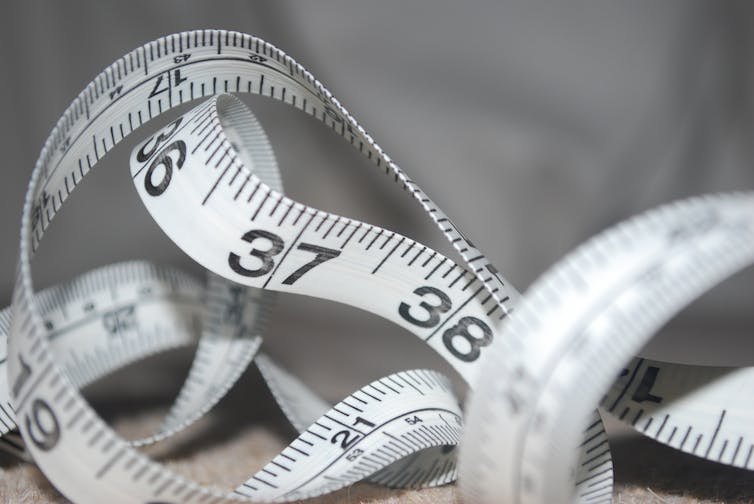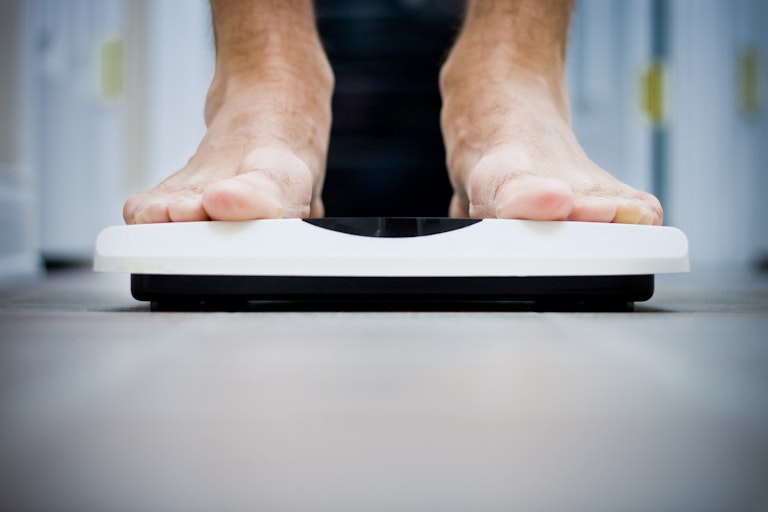When it comes to weight loss, there are no magic tricks that guarantee success. What works for you is likely to be different to what works for your partner, neighbour or workmate.
The best advice is to find a healthy eating regime – let’s call it a diet – that you can stick to. You may choose a specific diet book or commercial program to kick start your weight loss, but in the longer term, switch to an eating pattern you can live with for good.
The diet that works best will depend on many factors: your current weight, dieting history, how much weight you need to lose, reasons for wanting to lose weight, your knowledge and skills around food preparation and nutrition, personal supports and the time you have to focus on weight loss.
But first, a warning about fad diets.
Fad diets can work in the short-term because they lead to a reduction in total kilojoules but are usually nutritionally inadequate.
They often ban specific foods or food groups, such as carbohydrates, and promise miraculous results. Or they may promote unproven fat burning or other supplements. Fad diets generally contradict advice from credible health professionals.
Research shows the more radical the diet approach, the more likely you are to give up because of boredom or unpleasant side-effects including bad breath, constipation, and even gall bladder disease.
Getting started
First up, decide on your weight loss goal. If your body mass index (BMI) is over 25, aim to lose up to 10% of your body weight in six months.
Next, decide how you’re going to monitor your progress. You can record your weight weekly using an app, at your weight-loss group or program, or use a pen-and-paper diary.

Reducing your energy intake
Everybody’s total daily energy needs are different, depending on your level of activity – this calculator can help you work out your individual energy needs.
A weight-loss diet should reduce your daily energy intake by at least 2,000 kilojoules (kJ) per day compared to what you usually eat when weight stable.
That is enough of a kilojoule reduction to lose a quarter to half a kilogram per week, which can add up to 12 to 25 kilograms over a year.
Sounds easy, but it’s a lot more difficult in practice. You have to be consistent every day and every week. This is why you need to choose a diet that really appeals to your tastes and preferences. It doesn’t really matter which diet that is, so long as it specifically targets a reduction in total energy (kilojoules or calories), and you can stick to it.
When it comes to weight-loss diets, there are three levels of energy restriction:
Reduced-energy diets (RED)

REDs aim to reduce a person’s usual energy intake by 2,000 to 4,000 kJ per day from their usual needs. You can achieve this by changing some food habits, such as cutting down your portion sizes, swapping soft drink for diet versions or soda water, or not eating after 8pm to reduce snacking.
Other approaches that fit this category are low glycemic index (GI) diets or avoiding foods with added sugar.
Low-energy diets (LED)
LEDs prescribe a daily energy intake of about 4,200 to 5,000 kJ per day. This is usually a list of specific meals and snacks that you follow closely to ensure your kilojoule intake matches the daily target.
Most commercial weight-loss programs – such as Weight Watchers, Biggest Loser Club, Jenny Craig or home delivery Lite n Easy – provide this. Weight-loss diets that give you a meal plan, such as those designed by accredited practising dietitians, are usually LEDs.
Very low-energy diets (VLED)
VLEDs limit total energy intake to only 1,800 to 2,500 kJ per day.
This approach uses formulated meal replacements (FMRs) to ensure your energy intake is kept very low. FMRs are supplemented with vitamins and minerals to try and meet the body’s requirements, despite the severe energy restriction.
VLEDs, such as Optifast or KicStart, are used when you need to lose weight quickly for health reasons or ahead of surgery. Talk to your GP first because they need to be supervised by a doctor or dietitian due to potential side-effects such as gall bladder or liver inflammation, constipation, headaches and bad breath.
Long-term change
The level of energy restriction to aim for depends on what you think you can stick to. If your weight is going up by a few kilograms each year, then your current energy needs are probably around 9,000 to 11,000 kJ per day.
If you have never been on a diet before, then start with an RED.
If you want to lose weight faster, you will need the lower kilojoule target of an LED, but it will be harder to stick to.

Once you have set the level of energy restriction, then further manipulating nutrients – by eating more or less protein, for instance – will not lead to greater weight loss. This applies to altering the proportion of total fat, the glycemic load or glycemic index of the carbohydrate.
For weight loss, it is kilojoule total that counts.
Monitoring your success
The National Health and Medical Research Council’s (NHMRC) 2013 guidelines for weight management, which are based on the best available scientific evidence, highlight the importance of recognising and avoiding triggers that prompt eating and learning to modify unhelpful thinking patterns that become barriers to following a diet.
The guidelines also note that self-monitoring is key to weight-loss success. If you track your progress in a weight-loss diary and monitor your dietary intake, physical activity, body weight and measurements, you’re more likely to lose weight and keep it off.
Once you have found the eating pattern that allows you to lose 250 grams to one kilogram per week, share your success story. That way more people will discover that “the best diet” for weight loss might not have a fancy name, but is an approach that you can live with, for good.
Editor’s note: thanks to all who took part in our author Q&A.

